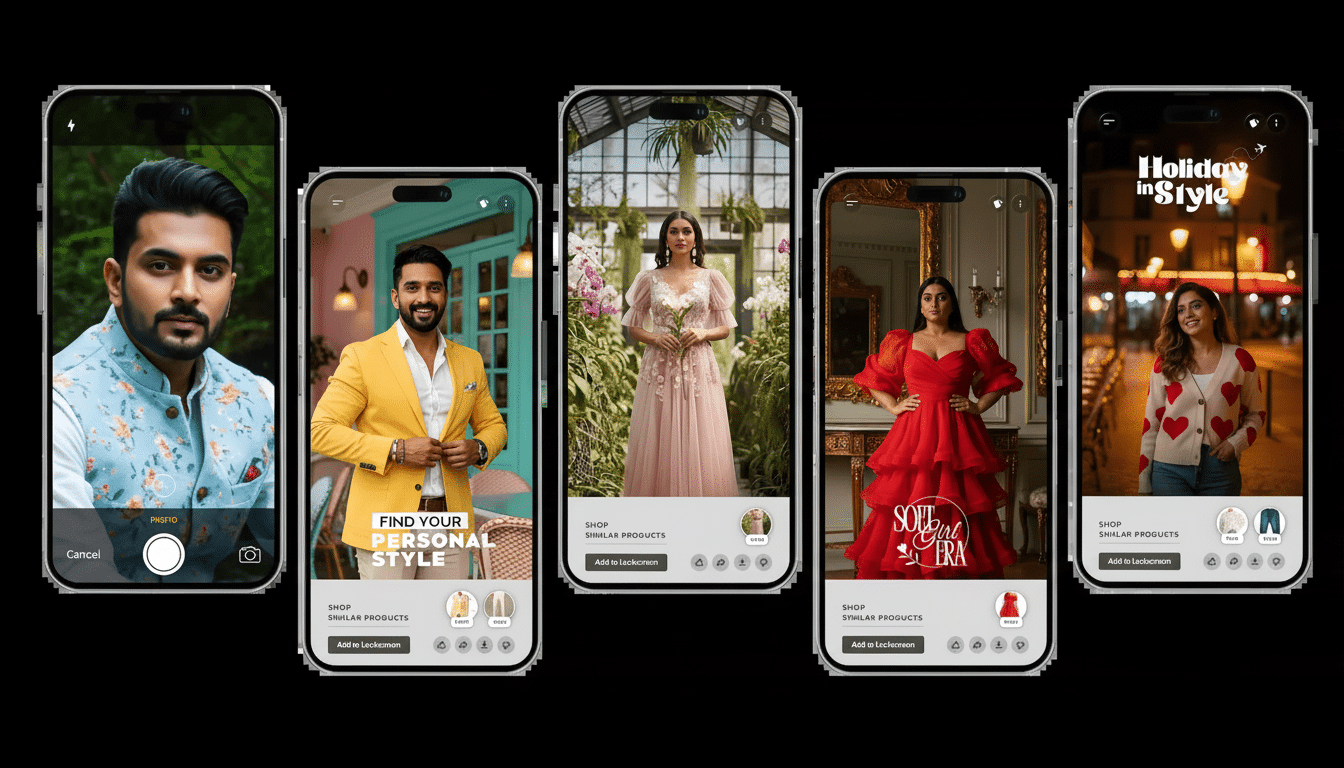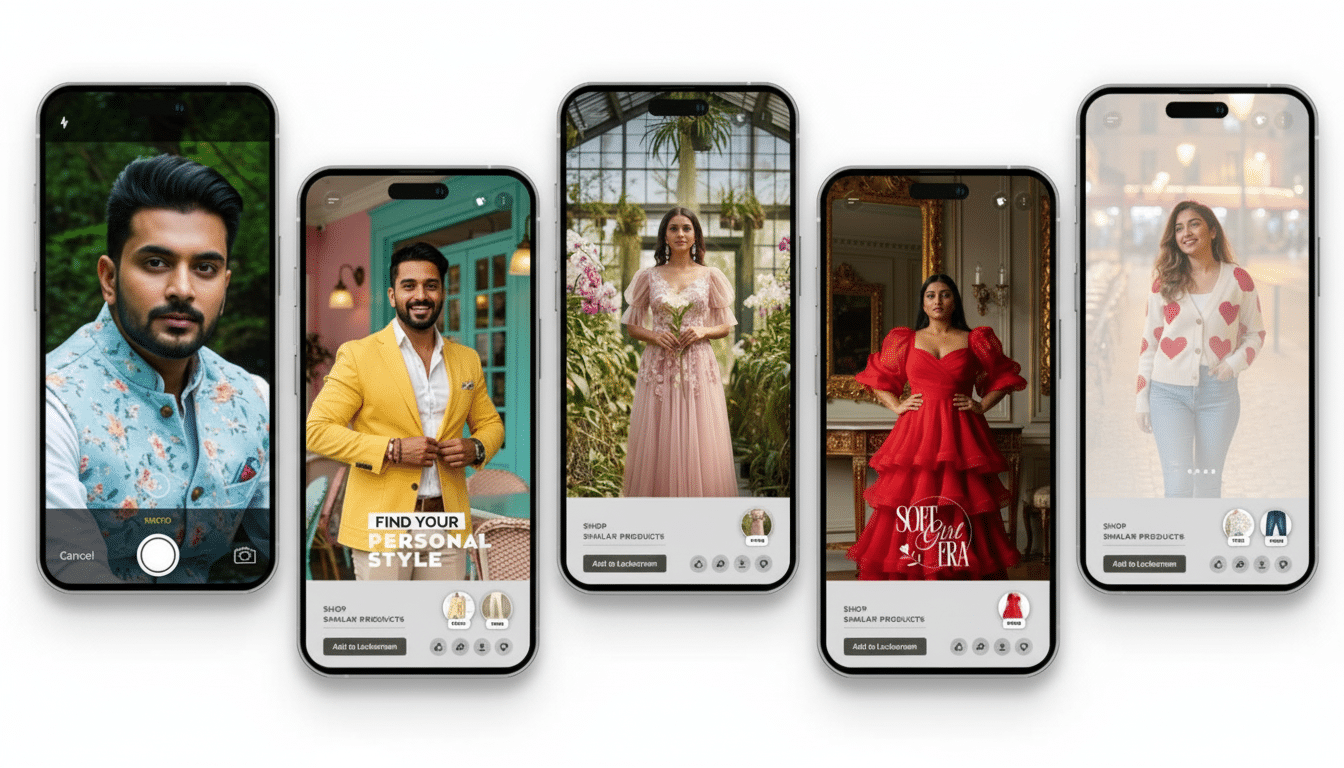Who needs a model from the catalog when your own face can pitch the product? DirecTV is publishing television commercials driven by AI and made interactive, where a user can drop into the ad and create their own imagery on top of the actual screen using Glance AI. The service effectively transforms a motionless screen into an intimate storefront, featuring an avatar resembling your selfie that can wear clothes and prompt you to tap “buy” on your phone.
How It Works on Your TV with DirecTV and Glance AI
The feature works on DirecTV’s Gemini boxes, including the Wi‑Fi‑equipped Gemini Air. After the TV lies dormant for around 10 minutes, its standard wallpaper images are replaced by Glance’s AI‑driven screensavers. Scan a QR code to link your phone to the TV; take a selfie and the system superimposes your face onto a model in the on‑screen ad. You can then browse looks, see sizes, and make a purchase from your phone while the TV does double duty as your glamorous mirror.
- How It Works on Your TV with DirecTV and Glance AI
- Why Advertisers Are Betting Big On Shoppable CTV
- Personalization Without the Creeps: Privacy and Consent
- What It May Mean for Smart TV Platforms Going Forward
- The Fine Print for Viewers: Controls, Labels, and Limits
- Bottom Line: What DirecTV and Glance AI Could Change

Glance says the company’s version is powered by on‑device AI developed in partnership with Google, which it says will minimize latency and the amount of data leaving your living room. In addition to avatar‑driven ads, the screensaver cycle can bubble real‑life weather and sports alerts — handy breadcrumbs for keeping viewers tuned in without shoving them into an app.
Why Advertisers Are Betting Big On Shoppable CTV
Ad spending on connected TV is soaring as marketers follow where audiences have flocked from cable to streaming. Insider Intelligence projects that US CTV ad spending surpassed $30 billion in 2024, with double‑digit growth anticipated as brands further shift budgets toward performance‑friendly formats. The pitch is basic: If TV ads can be scanned and shopped instantly, they become measurable storefronts rather than just talking in the background.
Retail integrations already have momentum. Roku teamed up with Walmart to offer “click‑to‑purchase” from the couch, and NBCUniversal’s ShoppableTV deployed QR codes to deliver mobile conversions during tentpole broadcasts. DirecTV’s twist is the complete‑face personalization — replacing stock models with the person who was watching, which might tighten the loop between awareness and action.
There’s data to back the bet. According to McKinsey, marketing personalization can increase revenues by 5% to 15% and the efficiency of marketing spend by 10% to 30%. In the CTV context, getting a nudge from seeing “you” in that product could be all it takes to transform an interest into a checkout.
Personalization Without the Creeps: Privacy and Consent
Turning faces into ad fodder immediately raises questions of consent, storage, and security.
An extra layer of discomfort came when some people realized how Facebook was using facial recognition to connect with them.
Any database capturing biometric data — even a single selfie — should be designed to make opting out explicit and offer clear controls for deletion of images and avatars. Laws, like Illinois’ Biometric Information Privacy Act or Europe’s GDPR, establish a high bar for disclosures and retention policies, however, and family living rooms confound consent when the screen is shared among more than one person.

Glance’s focus on processing locally is an important step, but it doesn’t make privacy concerns disappear entirely. Platforms will still require guardrails around age gating, default to “off” for children’s profiles, and stop the reuse of faces beyond the original creative. The ad industry at large, too, is investigating provenance standards such as the C2PA framework to place watermarks on AI‑generated content and signify whether synthetic media is in use — handy for keeping deepfake mayhem in check.
What It May Mean for Smart TV Platforms Going Forward
TVs are soon turning into AI canvases. LG and Samsung had previously announced integrations with Microsoft’s Copilot, signaling a push to take assistant‑style interactions to the largest screen at home. DirecTV’s partnership with Glance signals a different direction: ambient, interactive content that lives between your shows and streams, quietly monetizing your dead time.
If they do accept these new modes of interaction, there could well be greater courtship by TV operating systems with retail and sports partners that transform screensavers into active feeds featuring shop‑the‑look widgets, live odds, and local notifications.
“It will be all about the measurement: advertisers are going to want attribution, retailers are going to want to tie it all back from QR scans and purchases all the way down the chain,” Crank said, while consumers will still maintain at least some sense of privacy: “We need a return that allows us household specifics so people can go door‑to‑door and target based on daypart without having personal data out there in unnecessary ways.”
The Fine Print for Viewers: Controls, Labels, and Limits
For consumers, the experience will revolve around transparency and control. The best executions will allow you to preview how your avatar appears before anything is saved, give opt‑ins on a per‑campaign basis, and have an option to dissolve all images and profiles with the tap of a button. Bloch also believes clear on‑screen labels that an ad uses generative AI can help manage expectations and prevent uncanny valley moments.
There’s also some practicality: the feature requires the Gemini hardware of DirecTV at present, so this isn’t a universal upgrade. And so far, it might be a novelty to see your face playing on the screen, but whether or not they feel “additive” as opposed to simply intrusive during downtime will be more of a test.
Bottom Line: What DirecTV and Glance AI Could Change
DirecTV and Glance AI are bringing TV ads into an age of first‑person‑ness (that’s right, personhood). If the privacy posture is strong and the creative respectful, it could become a shoppable CTV standout — compressing the distance between “that looks good” and “that looks good on me” into a single scan.

